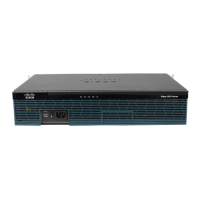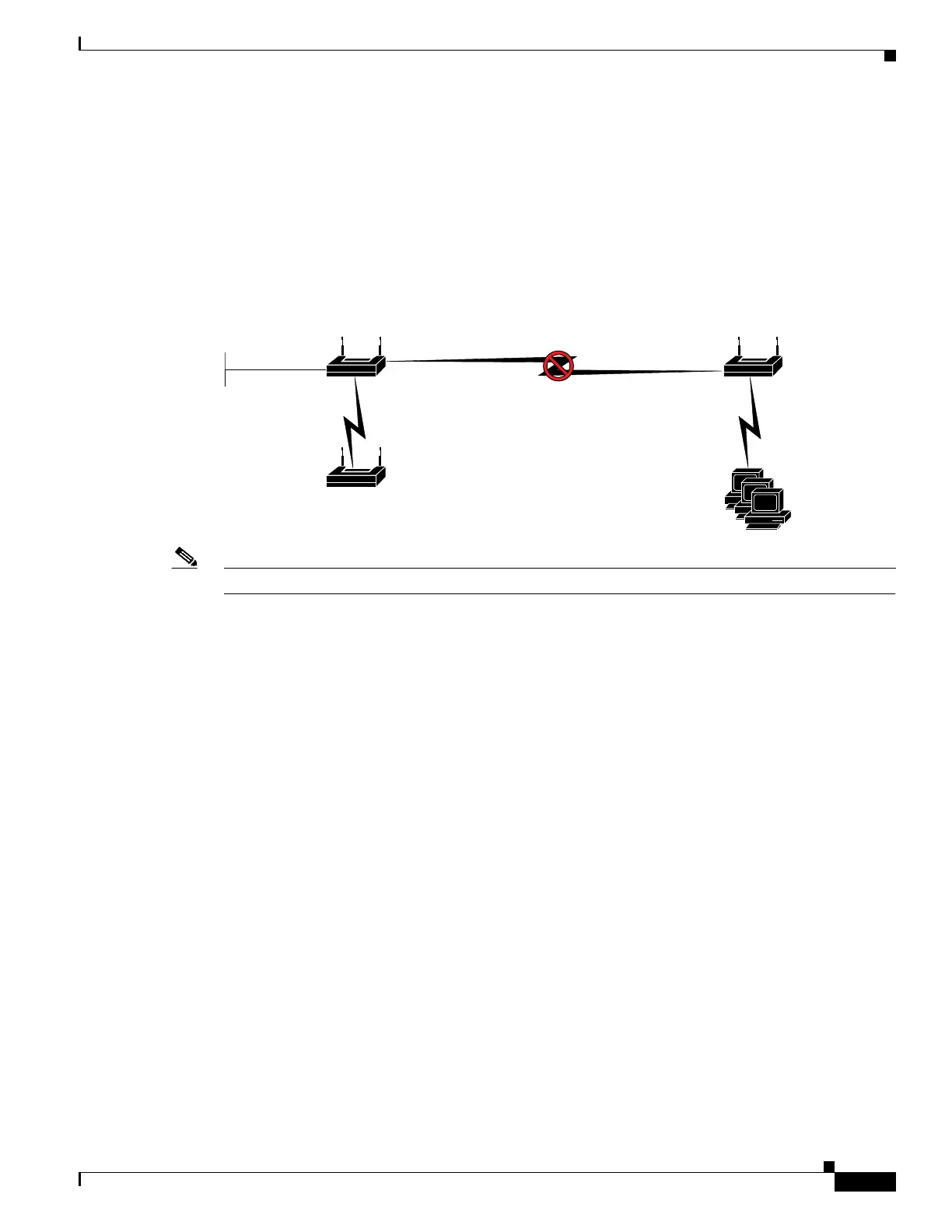265
Cisco 3900 Series, Cisco 2900 Series, and Cisco 1900 Series Integrated Services Routers Generation 2 Software Configuration Guide
Chapter Configuring Radio Settings
Configuring Dual-Radio Fallback
Configuring Dual-Radio Fallback
The dual-radio fallback feature, see Figure 1, allows you to configure access points so that if the non-root
bridge link connecting the access point to the network infrastructure goes down, the root access point
link through which a client connects to the access point shut down. Shutting down the root access point
link causes the client to roam to another access point. Without this feature, the client remains connected
to the access point, but won’t be able to send or receive data from the network.
Figure 1 Dual-Radio Fallback
Note This feature does not affect the fallback feature for single-radio access points.
You can configure dual-radio fallback in three ways:
• Radio tracking
• Fast Ethernet tracking
• MAC-address tracking
Radio Tracking
You can configure the access point to track or monitor the status of one of its radios. If the tracked radio
goes down or is disabled, the access point shuts down the other radio. If the tracked radio comes up, the
access point enables the other radio.
• To track radio 0, enter the following command:
# station-role root access-point fallback track d0 shutdown
• To track radio 1, enter the following command:
# station-role root access-point fallback track d1 shutdown
Access point
Fast Ethernet
11 a Root
bridge mode
11 b/g root
access point
mode
11 a Root bridge
mode
11 a non-root
bridge mode
146930
Access point
Clients
Access point

